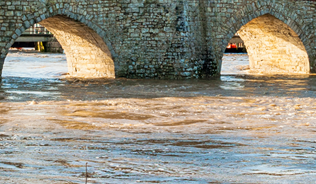The Institute of Air Quality Management (IAQM) have published new guidance on monitoring protocols and techniques for air quality in the vicinity of construction sites to help environmental professionals working to improve air quality. In 2006, the Greater London Authority (GLA) with the London Councils produced The Control of Dust and Emissions from Construction and Demolition: Best Practice Guidance, with the assistance of BRE and others. This guidance has been widely used to develop measures to be applied to control dust at construction sites, even outside London. Since the GLA Best Practice Guidance was published, there have been changes to monitoring techniques and considerable experience has been gained in the field from construction monitoring programmes, necessitating updated guidance.
Constructing buildings, roads and other infrastructure can have a substantial, temporary impact on local air quality. The most common impacts are increased particulate matter (PM) concentrations and dust soiling. Depending on the risk of dust effects occurring, monitoring may need to be carried out during both demolition and construction activities to ensure that the applied mitigation measures are effective in controlling dust emissions, and that there are no significant impacts on the surrounding environment.
This new guidance includes information on site monitoring protocols and air quality monitoring techniques, and when these should be applied, which the Mayor of London committed to updating in his 2010 Air Quality Strategy. The guidance is based on the most up-to-date information available, and draws upon the practical experience of the Working Group members, and other contributors, over many years. The evidence related to the development of site action levels applied to both concentrations of particulate matter and dust deposition rates is, however, very limited. Although substantial monitoring around construction sites has occurred since the GLA Best Practice Guidance was first published, there has been little or no attempt to pull this information together and the data are not readily accessible within the public domain. The IAQM encourages local planning authorities to make these data public via the s106 legal agreements that are established, so that appropriate future site action levels can be founded on more robust information.
The guidance can be downloaded here.


